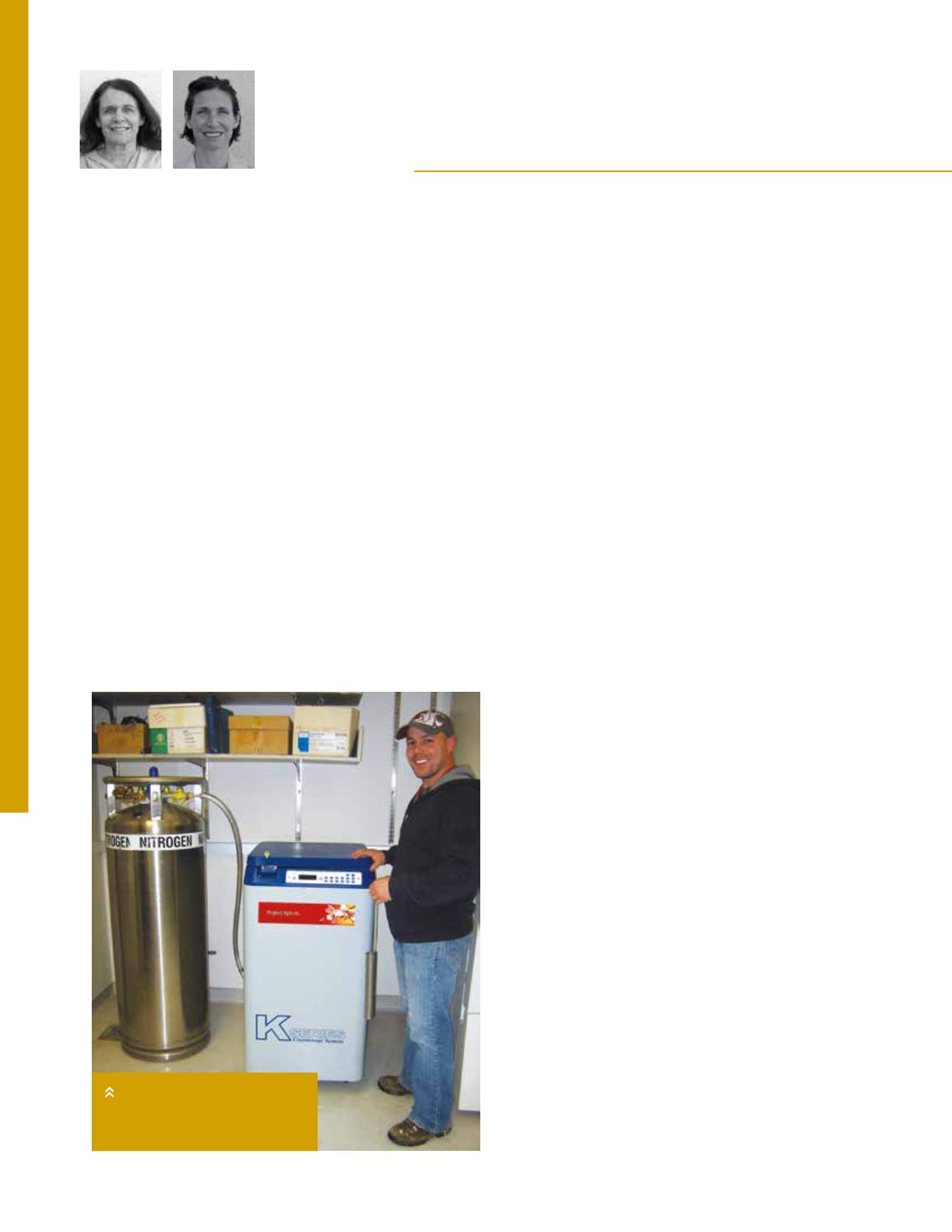
THE BEE BOX
28
Almond Facts
MAY | JUNE 2016
The Bee Box
CHRISTI HEINTZ
& TARA McCALL
Advances in almond breeding have been nothing short of astonishing when you consider the
accomplishments of variety and rootstock development projects. Crop yields increasing from 500 to
over 3,000 pounds per acre, fine-tuning rootstocks to best fit varieties and soil types, improved pest
and disease resistance – and now there are even varieties that do not necessarily require pollination by
honey bees. Many years ago these advancements would have been breakthroughs seen only in a crystal
ball and not in actual almond orchards. Advances in almond production owe a debt of gratitude to
wise industry leaders who recognized the value of funding top-notch scientists and farm advisors in
traditional methods of genetically improving almond trees.
Bees and Genetic
Improvements
Have we seen the same progress in stock improvement in
the honey bee industry – an industry so vital not only to
almond production, but also roughly 90 other agricultural
crops? The answer here is unfortunately no. Reasons for
this include, but are not limited to, a 1922 federal law
prohibiting import of honey bees to the United States, lack
of unification toward common industry goals, beekeeping
businesses being distributed geographically from coast to
coast across the U.S., and loss of over 30 percent annually
for this particular “herd” of bugs.
But Wait – Help is on the Way
Recent work under the diligence of Dr. Steve Sheppard,
Dr. Brandon Hopkins, Sue Cobey and several graduate
students at Washington State University (WSU),
Pullman, is changing the tide in honey bee stock
improvement and bringing significant advances to the
previously limited arena of building a better bee. Honey
bee genetics is the key.
The WSU Germplasm Repository is the world’s first
facility to provide long-term storage of viable honey bee
genetic material. The program has provided the first
sources of new honey bee genetics in the U.S. in the
last 90 years. Further, WSU works with the beekeeping
industry to incorporate germplasm from Old World
regions into bee breeding programs through importation,
cryopreservation, and distribution of genetic material to
the bee breeding industry. The repository preserves the
most important honey bee subspecies to beekeepers, as
well as existing populations from US queen producers,
USDA and WSU breeding programs. Samples of bees
are selected from the geographical regions where they
originated, and traits relevant to honey production, crop
pollination and better bee health are identified. Almond
Facts readers will be pleased to note the WSU program
includes evaluation of pollination in almonds.
With Project Apis m.’s purchase of the cryopreservation
unit for WSU’s Germplasm Repository, a significant step
has been taken toward developing both the WSU’s research
program and their ability to practically assist queen breeders.
The cryopreservation has a capacity to hold over 46,000
straws or semen samples. In addition to housing storage
capacity, WSU has developed improved cryopreservation
techniques, methods to allow delayed cryopreservation, and
also improved airline transport of germplasm.
Dr. Brandon Hopkins, WSU, with the
cryopreservation unit purchased by
Project Apis m. This unit houses over
46,000 germplasm samples.


